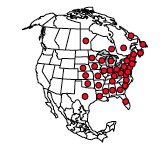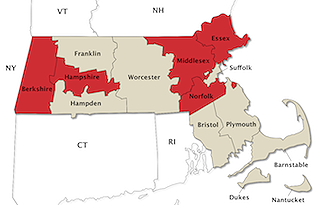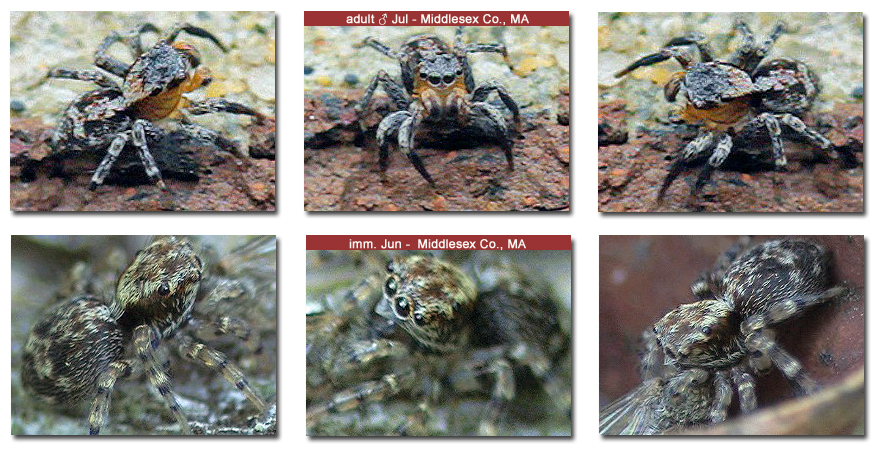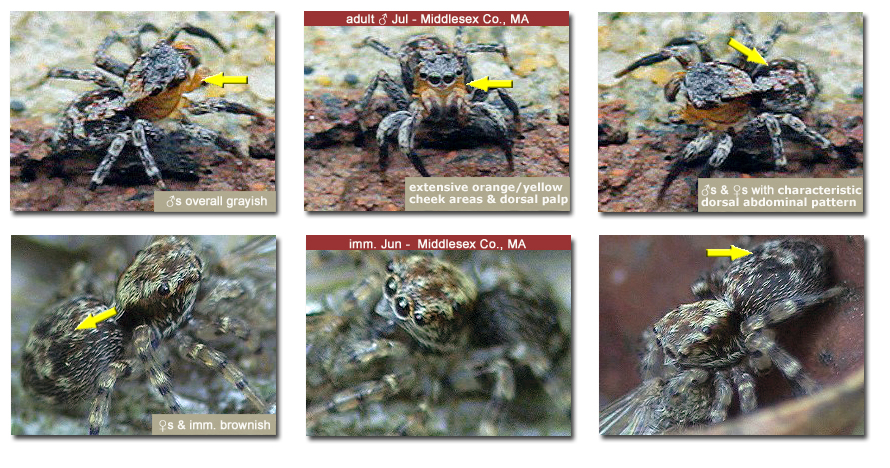Naphrys pulex (Hentz, 1846)

Richman, Cutler & Hill 2012
Entomology and arachnology are both fertile grounds for aficianados of etymology. Nicholas Marcellus Hentz’s original description of Naprys pulex includes the following: This little spider is common near the ground, where it may be seen moving with sudden, rapid motions, and jumping, like a flea, to great distances.
To reflect its diminutive size Hentz named the spider Attus pulex, the specific epithet being the Latin word for flea. Another interesting word associated with this small jumper is “synanthropic.” Cutler points out that in its strictest sense this adjective describes species that are both non-native and found only around man-made structures (see Salticus scenicus and Sitticus fasciger). Our present species is also said to be synanthropic in a less strict sense. N. pulex is a native of North America whose preferred natural habitats include woodlands and rock outcroppings, but it also makes a home on the exterior walls of buildings. This species regularly preys on ants and its choice of habitats may reflect this adaptation.
Hentz, 1875; Cutler, 1980, 1990
Massachusetts – First State / County Records

- ♦ J. H. Emerton – Saitis pulex – Massachusetts – Emerton, 1891: 246, pl. 20, f. 7
- ♦ *BSNH – Habrocestum pulex – Norfolk (Sharon), Middlesex (Cambridge), Berkshire (Williamstown) – Bryant, 1908: 100
- ♦ C. Eiseman – N. pulex – Hampshire (Pelham), April 2011 – BugGuide node 533957
- ♦ P. Cristofono – N. p. – Essex (Salem), April 2013 – BugGuide node 763641
-
♦ Connecticut – Habrocestum pulex – Kaston, 1948: 462
Extremely common all over the State.
- Edwards, G. B. 2003. A review of the Nearctic jumping spiders (Araneae: Salticidae) of the subfamily Euophryinae north of Mexico. Insecta Mundi 16(1-3): 65-75.
- *See Bryant, 1908



